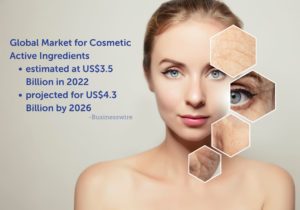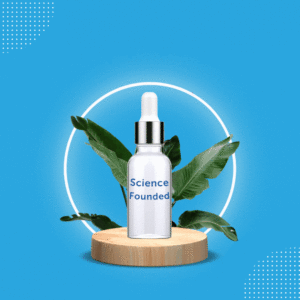As the book written on The Science of Communicating Science explains, SciComm is “a variety of practices that transmit scientific ideas, methods, knowledge and research to non-expert audiences in an accessible, understandable or useful way.” And that is such a beautiful thing we in cosmetic chemistry get to share with our customer base. Consumers have dubbed themselves as “skintellectuals”, which is a cute way of saying they are taking the time to investigate the ingredients that go into their skin care products. In fact, 75% said they request more information from brands about product ingredients and benefits. Many consumers however have surface-level knowledge of those ingredients and how they will address their individual skin care needs. We at Azelis aim to help you align their needs with ingredients better suited through proper communication of the science behind them!

According to Businesswire, Amid the COVID-19 crisis, the global market for Active Ingredients for Cosmetics is estimated at US$3.5 Billion in the year 2022 alone, and projected for $4.3 Billion by 2026, so we will start right there.
Let us break down the science of Actives and how they translate to efficacy, value, and trust from your consumers even while we face yet another recession; and how communicating the right things has the potential to lead to brand loyalty for you.
#skinimilism

As we address consumers’ hunger for simplicity, transparency and efficacy, or more directly put; the concern for stripping away ingredients that is the “Express Lane of Personal Care” dubbed clean beauty. We must actually address that minimalism or simplicity doesn’t mean ineffective, on the contrary, it relies more on the efficacy of the ingredients which are responsible for the claims that interest your consumers.
For this reason, brands are navigating this hurdle by quantifying the INCI deck, similar to the more digestible labels of food products (no pun intended). This can be more related to the Pharmaceuticals industry in which an active ingredients section is stated on the label.
The delivery of our messaging should be thorough while also being decipherable for everyone, this is important as we face the potential for more misinformation and hurdles in the digital age. As we already understand the complications of supply issues over the last several years, we also should understand that this is something that we are likely to continue facing. Ingredients that are engineered have previously gotten a bad rap, however with the power of education, this can shift and lab-grown and fermented sources can move into a more key role and enhance more drastically the sustainability story of products.
Although it can be more challenging to combat the buzzwords and fast pace of social media, as they say, “Science is Science.” So, by enlightening and educating consumers on the methods of delivery, coupled with the ingredient origins (which is where a lot of the ingredient conversations took place over the last decade) it becomes second nature to define how claims become evident to the average consumer with the more than average appetite for research. When it comes to science, and sceptics there is nothing compared to the power of proof.
Deliver with Purpose; Make it Easier with Delivery Systems
Break into why delivery systems such as those highlighted below deliver the same functionality as the actives themselves, with better stability and increased ease of formulating:



